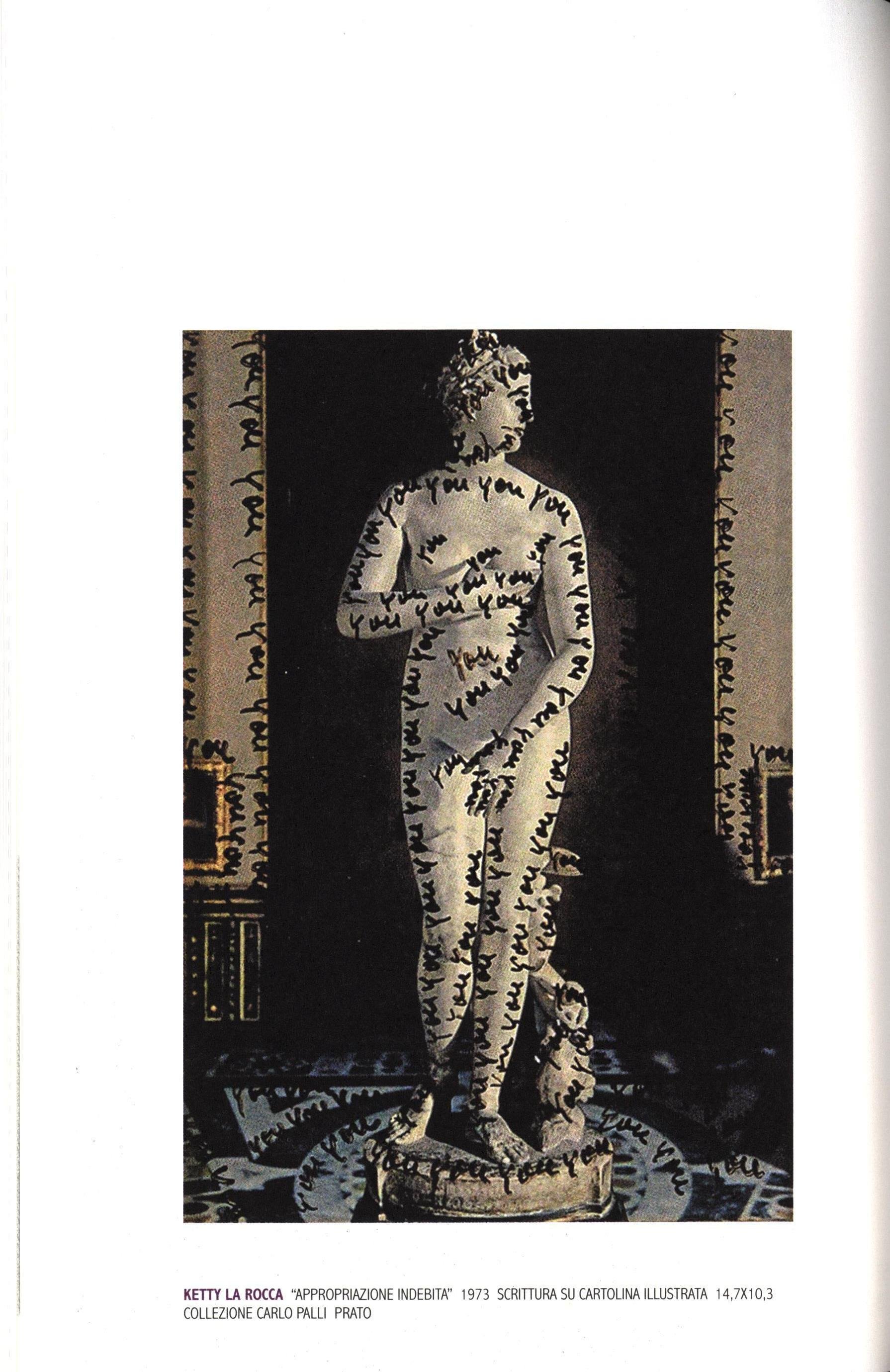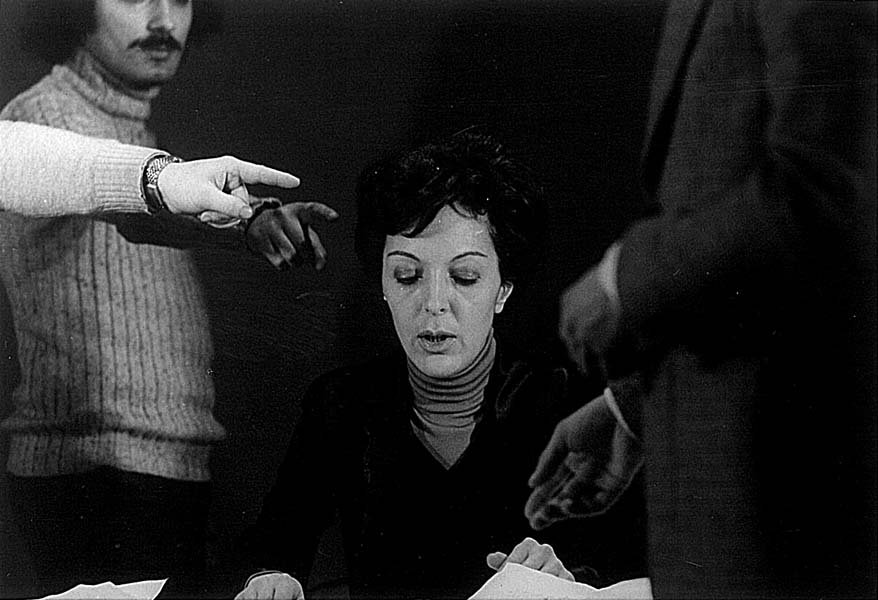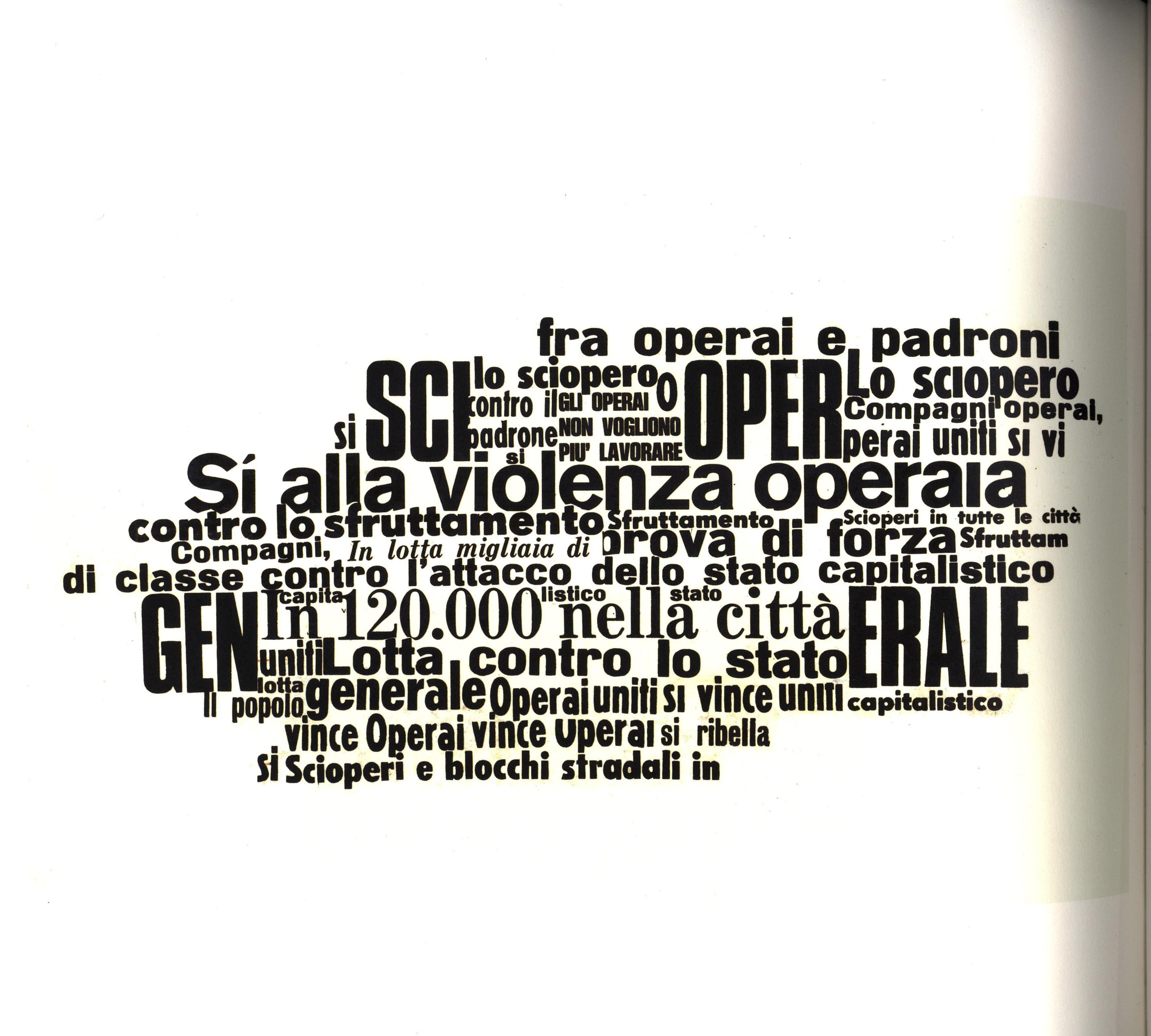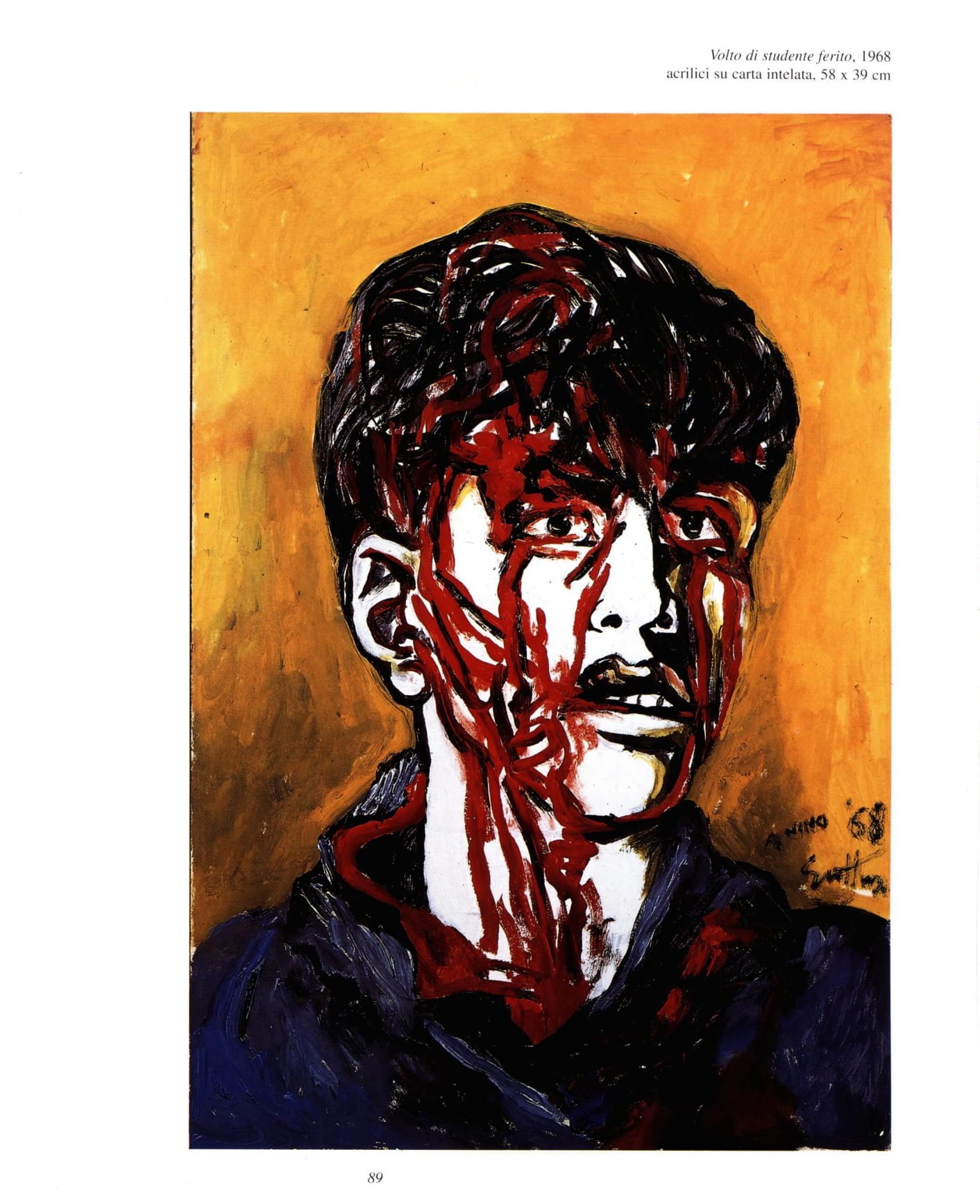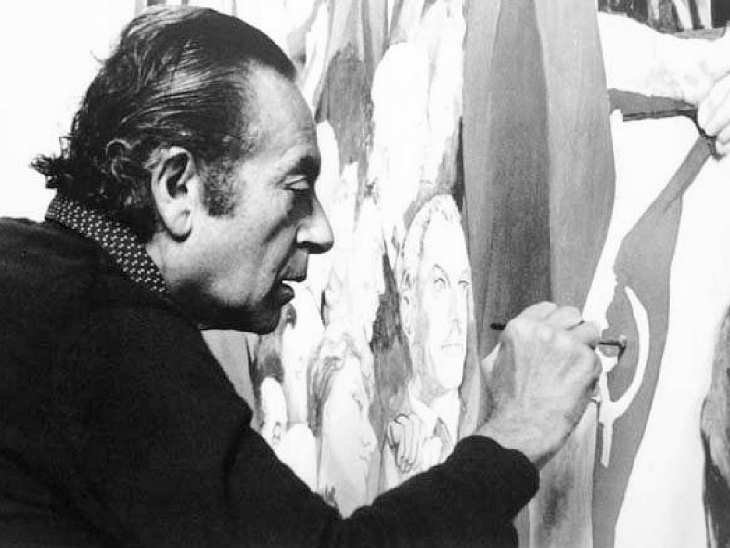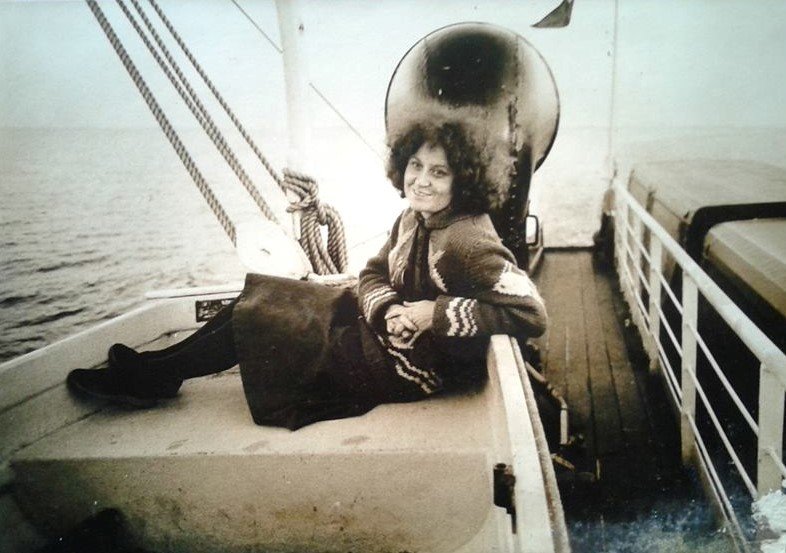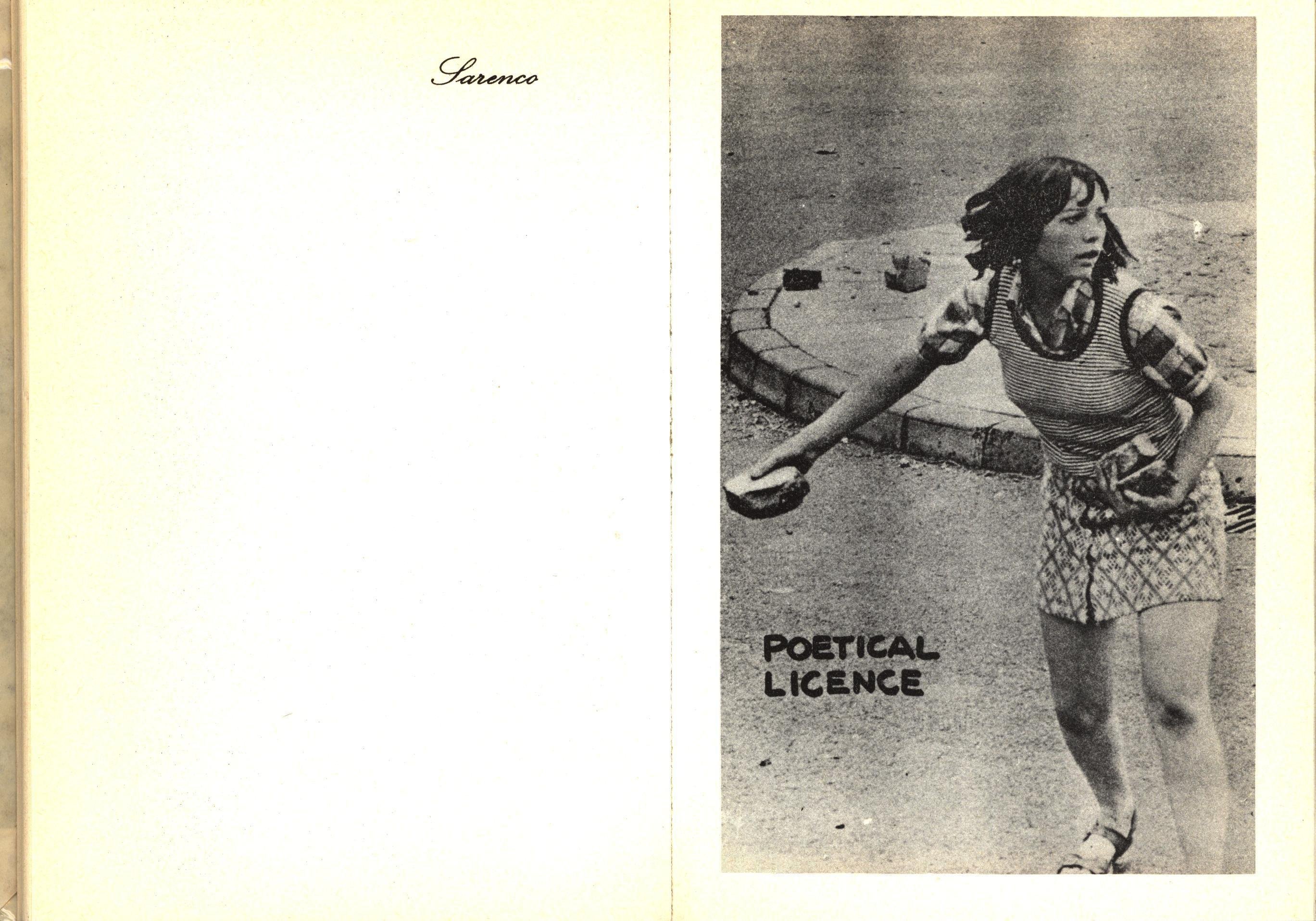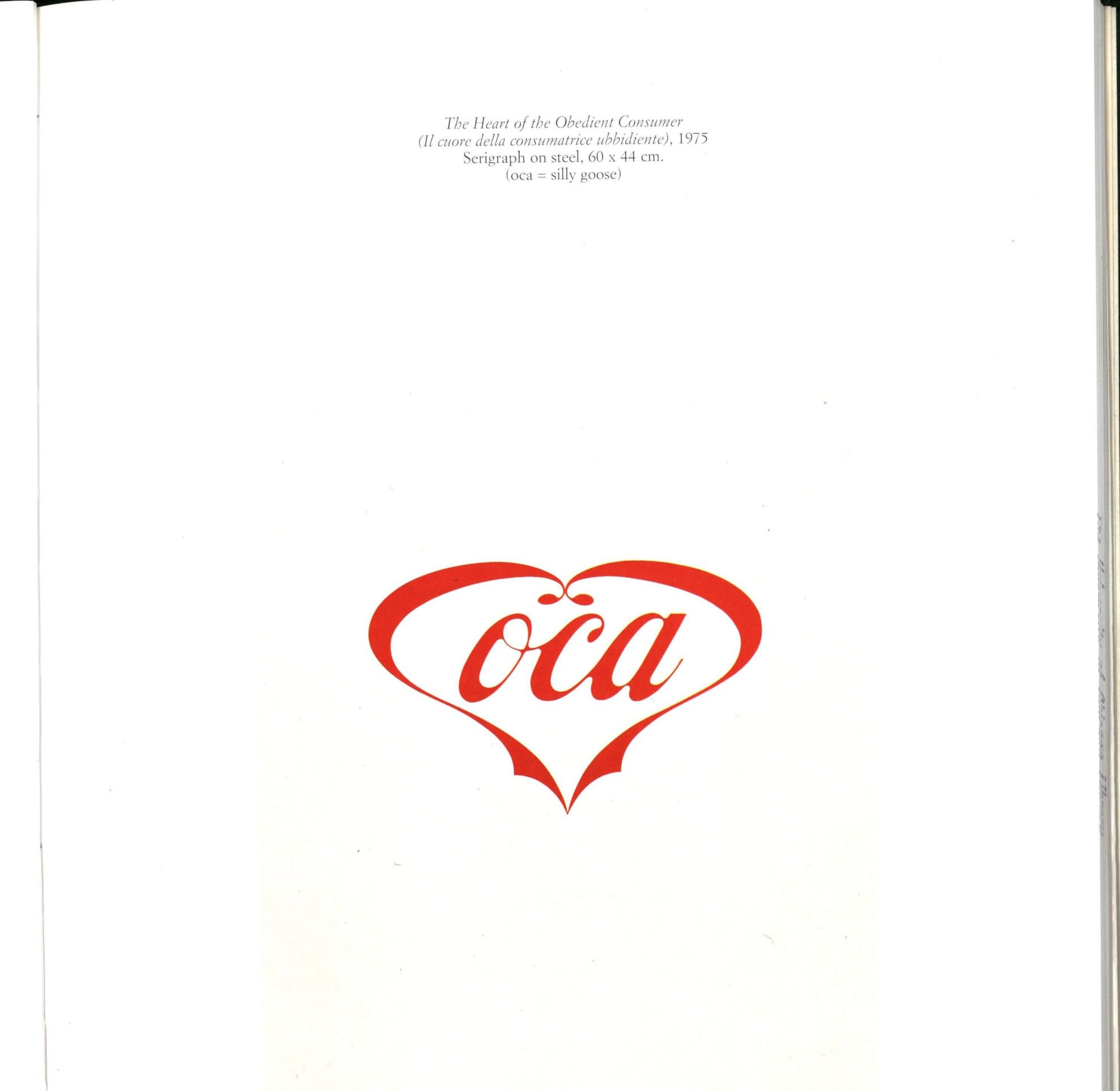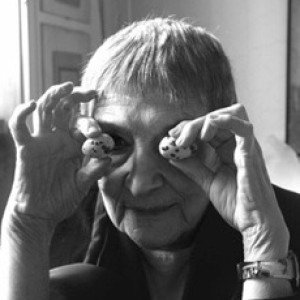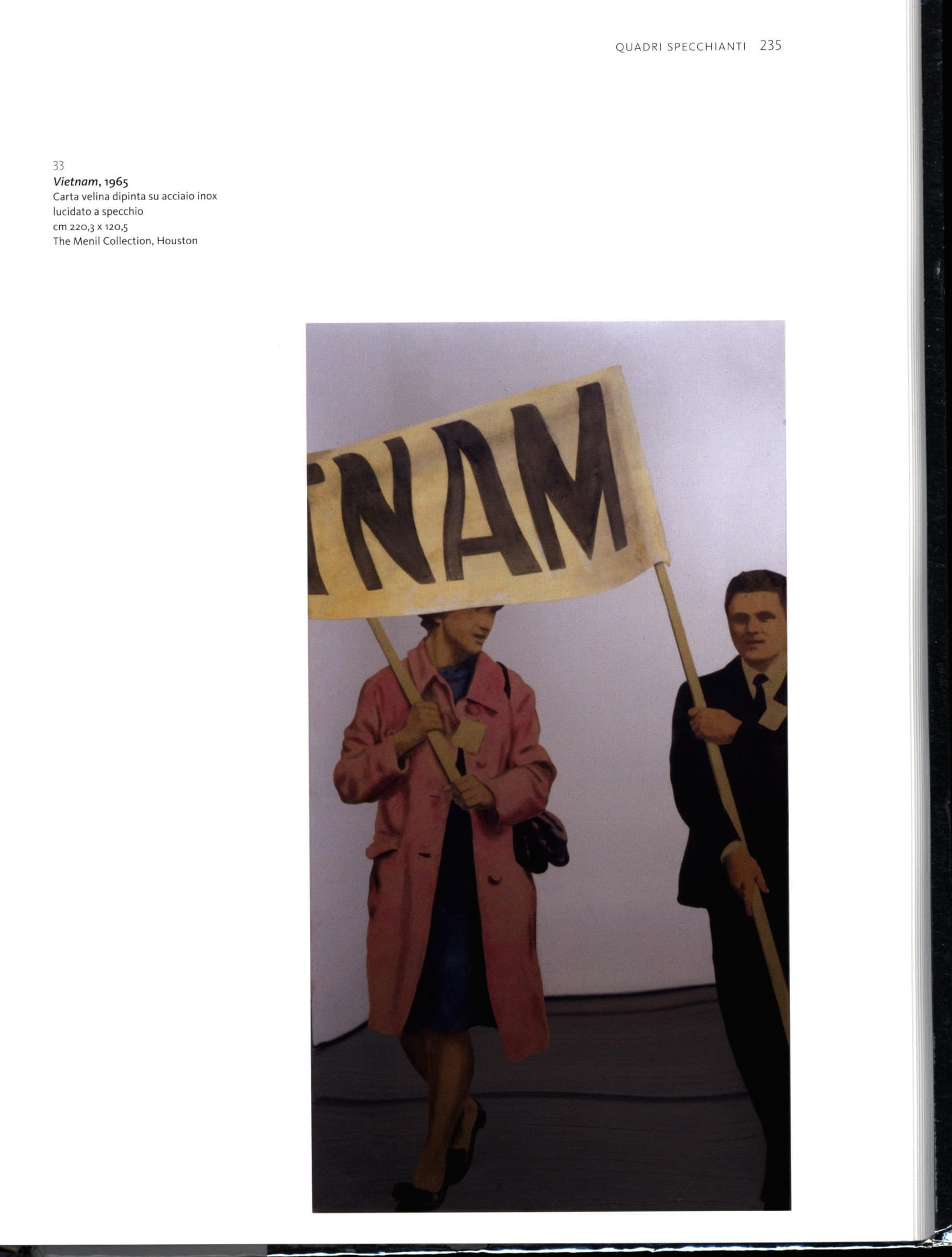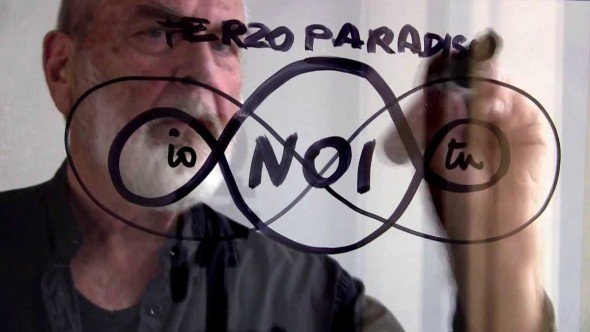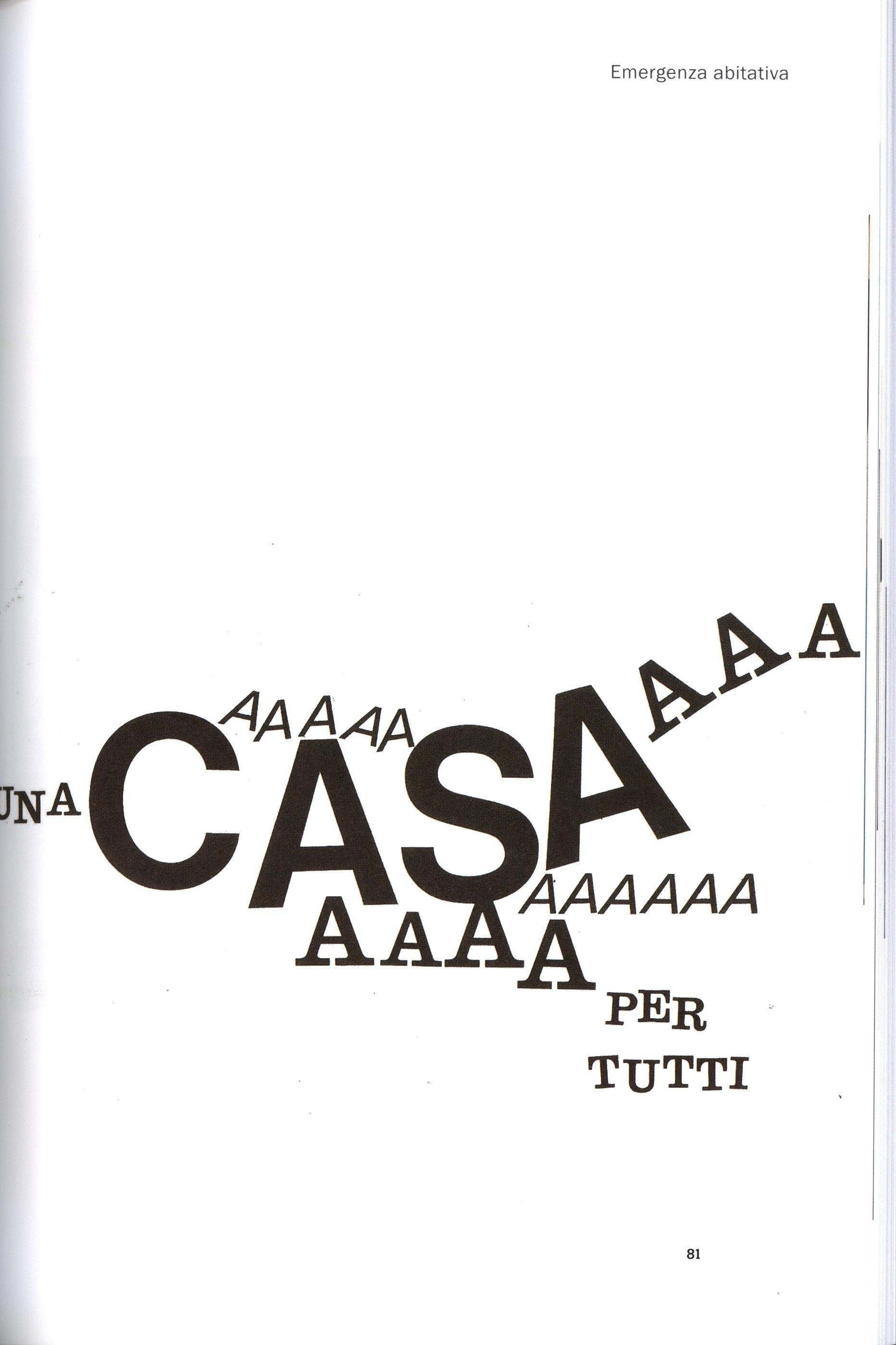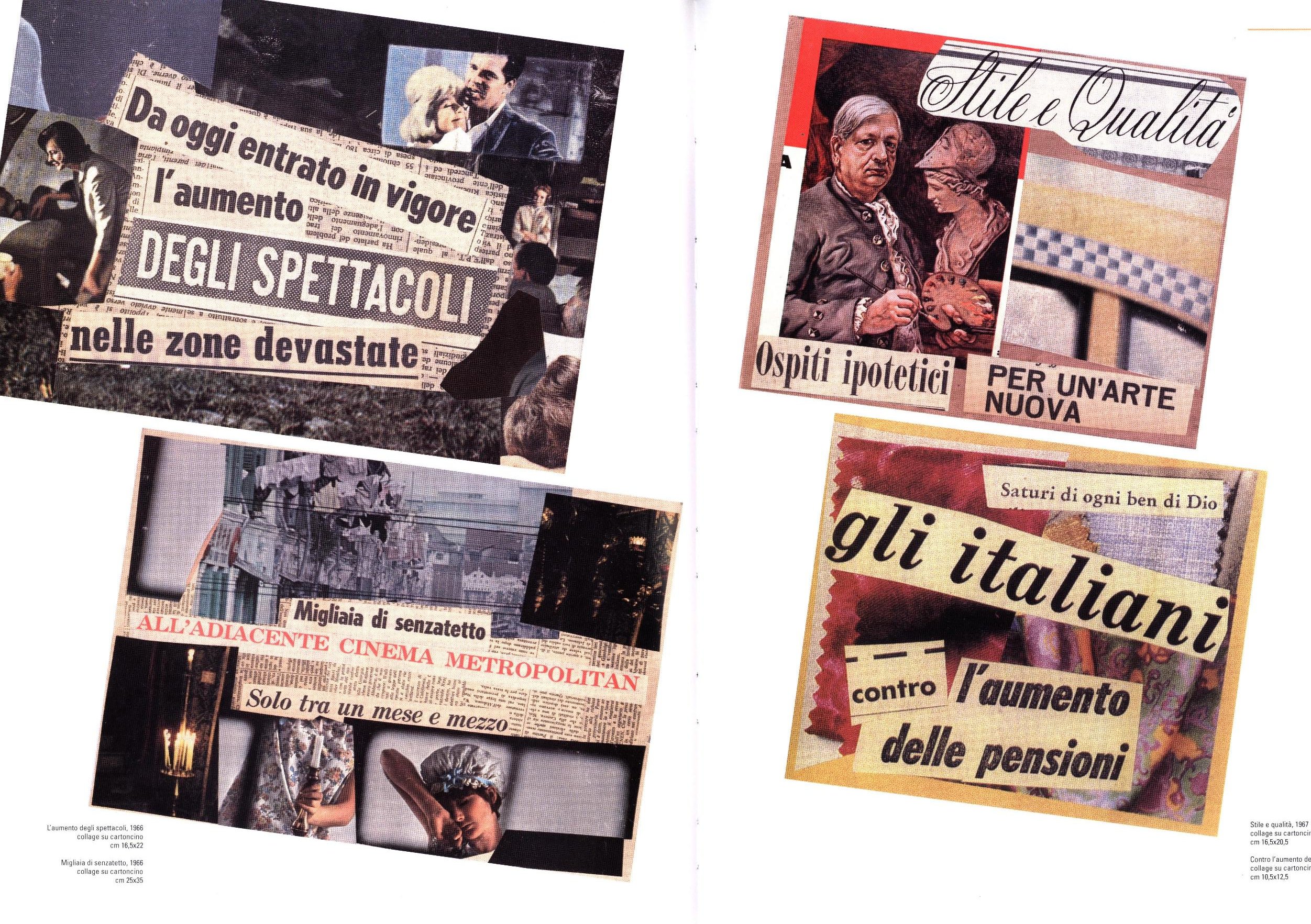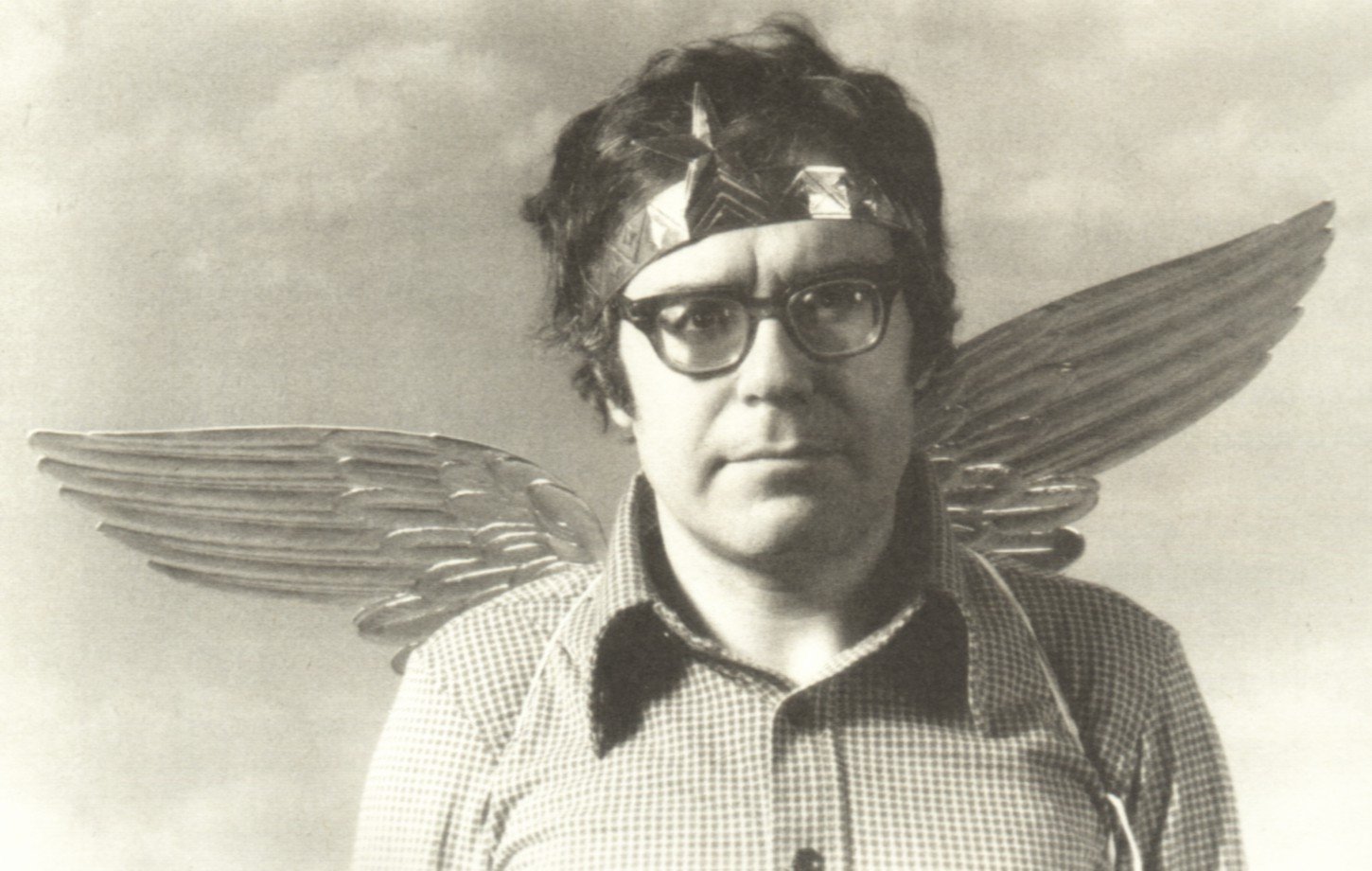Seeing the Struggles: Words and Images
Ketty La Rocca
Ketty La Rocca (1938-1976) was among the leading exponents of Conceptual and Body Art in Italy in a period when the participation of Italian women in the visual arts, traditionally dominated by men, became more consistent. La Rocca made specific reference to the female life experience and her work perfectly embodies the feminist slogan, “the personal is political”. In 1974 she released the following statement: “For women today is not a time of explanations. They have a lot to do and then they only have one language at their disposal, which is alien and inimical to them. They are robbed of everything, except of the things that no one notices and those are manifold, even if they must be arranged. Hands, for instance, too slow for female skills, too poor and too incapable of continuing to hoard. It is better to embroider with words...”
This work belongs to the series, You, which takes its name from the text scribbled over the images. The incessant repetition of the word “you” written over a female statuary body serves as a reminder of the other, a reminiscence of masculine domination and privilege, and thus of the problematic nature of female subjectivity and identity. The title “Undeserved Appropriation” stands for the artist's self-reflexive statement of authority over her own work as well as of autonomy from patriarchal control.
Nanni Balestrini
Nanni Balestrini (1935-) is an experimental writer and visual artist of the Neoavanguardia movement. He was a member of the famous Gruppo '63 and a militant of Potere Operaio (Worker’s Power). His radical work is notably engaged with political themes. In the selected work, he combines fragments taken from newspapers, leaflets, advertising, street voices, politician’s speeches, scientific texts, and so on, with the aim of giving life to the passion and rage against oppression of the precarious, marginalized, and unemployed. The words Sì alla violenza operaia (Yes to Workers' Violence) are purposefully assembled together to stand out at the center of the page.
Other important works are the collection of poems Blackout, written in 1977 after his indictment by Italian authorities, which led to his exile to France, and L'Orda d'Oro, a long essay written with Primo Moroni on the movement of the years 1968-1977.
Renato Guttuso
The Sicilian painter Renato Guttuso (1911-1987) is considered a key figure in the debate on the relationship between art and society and is remembered for his dedication to social justice. He believed in the power of art in playing a critical role in civil society. Among his best-known politically engaged works is the monumental painting depicting the funerals of the Italian Communist Party leader Palmiro Togliatti (1972).
Guttuso, who supported a great variety of social justice causes, with the painting Volto di Studente Ferito (Face of Wounded Student) commemorates the student uprisings of 1968. Student protests in Italy began to take off in 1967. Universities were occupied, professors were challenged in the classroom, and ideological groups even used violence to communicate their message. Famous is the “Battle of Valle Giulia” during which, in front of Rome's faculty of architecture, thousands of students confronted the police surrounding the building leaving hundreds of injured students and policemen.
Marcella Campagnano
Marcella Campagnano (1941-), already when she was a student at the Brera Academy in Milan, did not accept to live in a male-dominated world and felt a strong discontent due to the realization that the canon of art history excluded women artists. These feelings considerably inspired her reactionary works.
In the series “The Invention of Feminility: ROLES” the artist slips into different feminine roles, using a mirror to fine-tune her facial expressions and poses. In these photographs she appears as a wife, young miss, workingwoman, mother, student, love-struck girl, lady, pregnant woman, prostitute, bride, and paramour. By highlighting the constructed roles that women play in a patriarchal society, Campagnano was hoping that this series would ignite a political discourse. The photographs in fact expose the image of women objectified for the pleasure of the male gaze. She also emphasizes how a woman's social standing is defined through stereotypes and encoded in her dress while also stressing how difficult it is to escape these structures.
Sarenco
Sarenco, pseudonym of Isaia Mabellini (1945-2017), was a member of the collective Gruppo 70 and actively participated in the development and diffusion of the “Visual Poetry” movement. Among many other accomplishments, he was cofounder of the polemic magazine Lotta Poetica (Poetic Struggle) founded in June 1971. The objective of this project was to assign poetry in particular, and art in general, with a concrete political function, “bonding visual poetry with Marxism and political activism,” since the belief was that art functioned alongside social revolution. For Sarenco, in fact, visual poets are activists who have the duty to witness injustice and commit to denouncing it.
Sarenco's iconic work, Poetical License, greatly illustrates his plea for a radical and engaging poetry. The artist chooses a mix of materials, digital print and canvas, and combines the picture of an Irish girl during the street riots in Ulster about to throw a stone to British officials with the two words Poetical License, which acquire a new set of meaning and interpretation thanks to this provocative juxtaposition.
Mirella Bentivoglio
Mirella Bentivoglio (1922-2017) is known for her exploration of the relationship between image and word, and was also a renowned sculptor and performance artist. Her works have always been infused with a critique of the failings of Western societies, such as the obsession for material consumption, the oppression of women, the pollution of the environment, etc. Patriarchal structures (linguistic, economic, political) are of particular concern to her. In fact, through her poetic sensibility she encourages the viewer to reconceptualize the icons of power that surround us.
In Il Cuore della Consumatrice Ubbidiente (The Heart of the Obedient Consumer), she plays with the trademark of “Coca Cola” to provocatively criticize the extent to which fierce consumerism has invaded the hearts of people, while also stressing the construction of gender roles by making the word oca stand out in the page, which can be translated as “silly goose” and carries both a sexist and speciesist connotation.
Michelangelo Pistoletto
In the years 1965 and 1966, Michelangelo Pistoletto (1933-) made a series of mirror paintings exploring sociopolitical subjects. These works, known as the Comizi or Demonstrations series, were inspired by the political climate of those years. To capture this new reality of unrest and public upheaval, Pistoletto asked his friend Renato Rinaldi to take photographs of rallies in the streets of Turin. Pistoletto would then zoom in, isolate figures, extract and re-arrange them, on the surface of the mirror paintings, in order to recombine the same figures, themes, and sensibilities.
In this particular work, Pistoletto manipulated one of Rinaldi's pictures by transforming the name of a political candidate, "Giovanni," written on a parade banner, to “Vietnam”. So, just by reshuffling the letters and changing the writing, the image acquires a whole new valence. Pistoletto therefore places his subjects and objects in a new narrative in which they act out their roles away from their original context but always maintaining a political spirit.
Adriano Spatola
Adriano Spatola (1941-1981) has been a protagonist of Italian poetry of the 20th century. In his works, he explores the material base of language and the graphic possibilities it can produce. He believed in the interdisciplinary nature of arts and therefore creates complex artistic forms that he describes as free from all restrictions and capable of embracing simultaneously photography, music, painting, and cinematic techniques.
His social impegno was extremely remarkable. In this example of visual poetry, Casa per Tutti (Housing for All), the spatial arrangement of the words confers to the linguistic sign an array of conceptual associations. Here, the message in printed letters spreads throughout the page mimicking a loud voice of protest externalizing a strong discontent for the current housing situation. This particular slogan, often present at demonstrations, represented a general disapproval towards property speculation and for the absence of a city plan that would guarantee housing as a right for all citizens.
Lamberto Pignotti
Lamberto Pignotti (1926-) has been seduced since his youth by the poetic and artistic experimentations of the vanguards. He was a member of the Gruppo 70 and his ideology and direct engagement with audiences and society are very clear both in his theoretical writings and creative interventions.
In his collages he uses words and images taken from newspapers and magazines reassembled in a way that openly speak of political and social issues. The attacks to consumerism and the contemporary political climate are generally critical, polemical, and ironic. For Pignotti, the aim of visual poetry is “to create a link between art and what surrounds us, in a chaotic and uncritical way.” In these examples, he addresses problems related to retirement plans, the lack of housing, and other social issues, through a clever and ironic juxtaposition of words and images.
